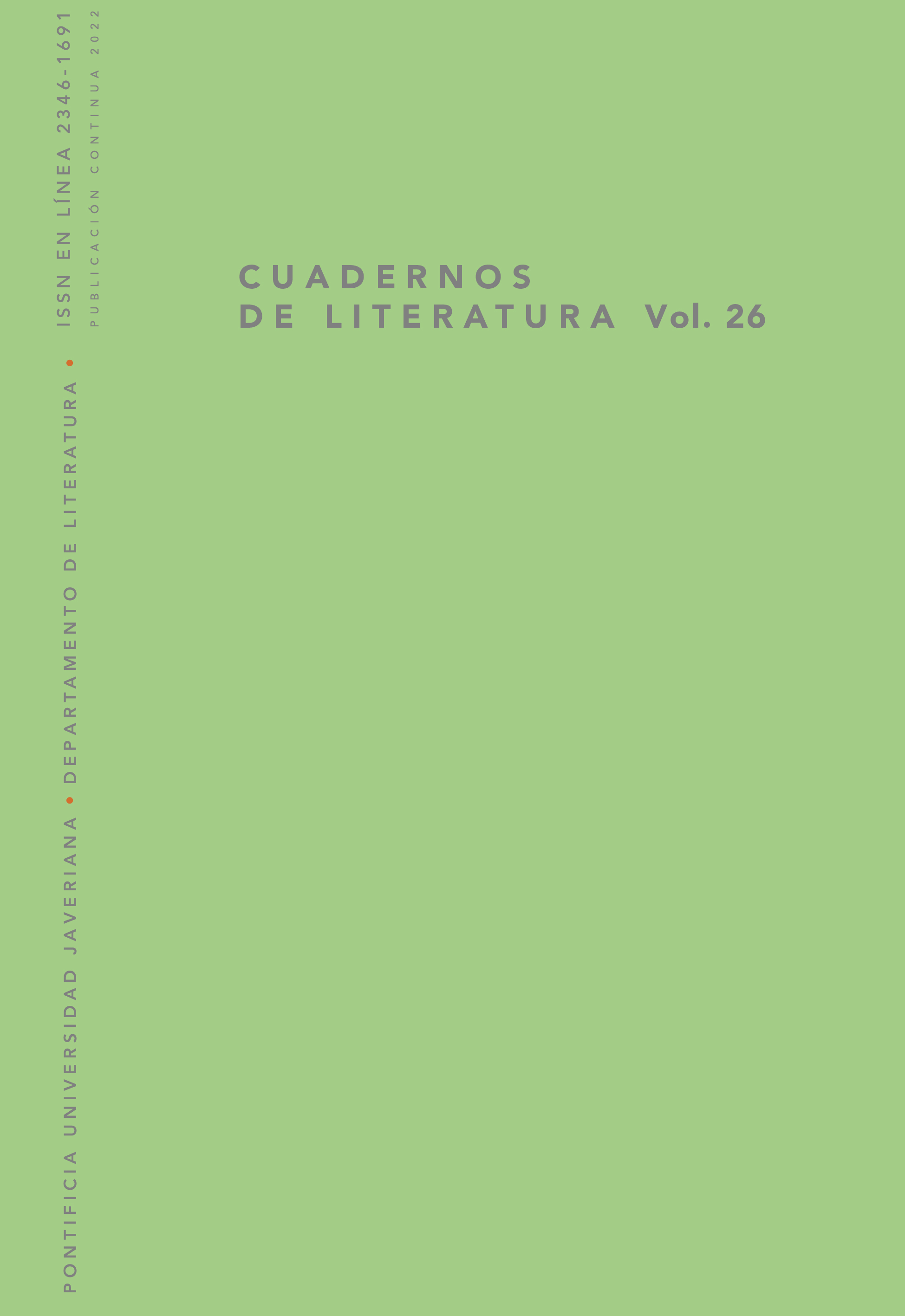Abstract
Taking as an analysis strategy the “counterpoint reading” deployed by the Brazilian critic José Miguel Wisnik in his essay “Machado Maxixe: the Pestaña case”, this work develops a “counterpoint” between typography and topography, anchored in the cultural history of the city of Valparaíso, in the middle of the nineteenth century. The analysis focuses on the edition of American Societies in 1828 that Simón Rodríguez published in the city, in 1840, in the printing house of the newspaper El Mercurio, interspersed with descriptions of travelers passing through the city, among them Mary Graham, Charles Darwin, Max Radiguet or Domingo Faustino Sarmiento. From this montage between typography and topography (between the blank space of the page and the space under construction of the city), historical waves of different duration and scope are superimposed and interfere, producing suggestive correlation effects around visual perception in Valparaíso towards the middle of the nineteenth century, correlation effects not necessarily analogical nor necessarily comparable in importance but through which a sensory heterogeneity appears that expresses different perceptual experiences in the city.
Benjamin, Walter. La obra de arte en la época de su reproducibilidad técnica. Traducción de Luis Miguel Isava, El Estilete, 2015.
Calderón, Alfonso y Marilis Schlotfeldt. Memorial de Valparaíso. Ril Editores, 2001.
De Certeau, Michel. La invención de lo cotidiano 1. Artes de hacer. Traducido por Alejandro Pescador, Universidad Iberoamericana, 2000.
Herrera Pardo, Hugo. “Imaginario prometeico y vanguardia de Valparaíso: exploraciones entre modernidad y metrópolis en la poesía de Pedro Plonka”. Acta Literaria, n.º 43, 2011, pp. 27-43.
Ingold, Tim. Líneas. Una breve historia. Traducido por Carlos García Simón, Gedisa, 2015.
Meschonnic, Henri. La poética como crítica del sentido. Traducido por Hugo Savino, Mármol izquierdo, 2007.
Molina Ahumada, Mauricio. “El caso de la epidemia de cólera en Valparaíso, 1886-1887. Los significados para la salud e higiene de la ciudad”. Valparaíso: historia y patrimonio, compilado por Baldomero Estrada Turra, Ediciones Universitarias de Valparaíso, 2018, pp. 55-94.
Mondragón, Rafael. “Hacia una edición crítica de Sociedades americanas en 1828 de Simón Rodríguez: claves para la reconstrucción de un proyecto editorial”. Utopía y Praxis Latinoamericana, vol. 21, n.º 75, 2016, pp. 113-137.
Rama, Ángel. Las máscaras democráticas del modernismo. Fundación Ángel Rama, 1985.
Ramos, Julio y Lizardo Herrera. Droga, cultura y farmacolonialidad: la alteración narcográfica. Universidad Central, 2018.
Rancière, Jacques. El reparto de lo sensible. LOM, 2009.
Rodríguez, Simón. Sociedades americanas en 1828. Edición facsimilar documentada y anotada de los cinco impresos que conforman el proyecto editorial. Universidad Autónoma Metropolitana, 2018.
Silva, Víctor Domingo. Monografía histórica de Valparaíso, 1536-1910. Altazor, 2011.
Szendy, Peter. A fuerza de puntos. La experiencia como puntuación. Traducido por Gustavo Celedón, Metales pesados, 2016.
Tello, Andrés Maximiliano. Anarchivismo. Tecnologías políticas del archivo. La Cebra, 2018.
Urbina Carrasco, María Ximena. Los conventillos de Valparaíso, 1880-1920. Ediciones Universitarias de Valparaíso, 2011.
Wisnik, José Miguel. Música popular brasileña y literatura. La gaya ciencia. Traducido por Mónica González García, Corregidor, 2018.

This work is licensed under a Creative Commons Attribution 4.0 International License.


